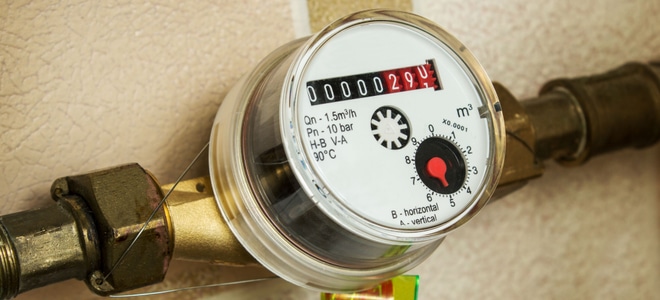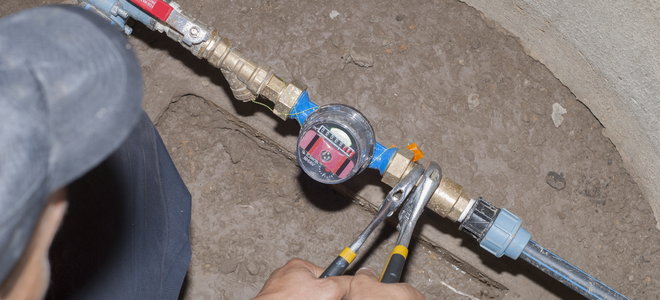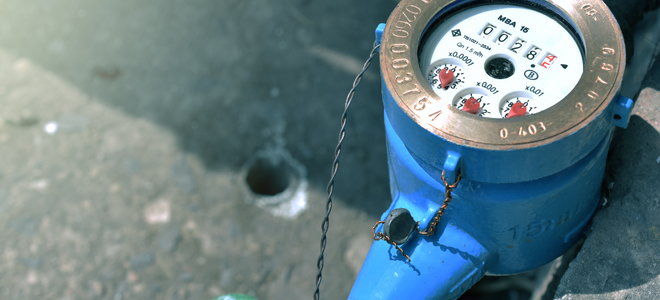 Connecting a water meter to your home is necessary when you transfer from a personal well to city or municipal water or when you build a new home. The primary purpose of a water meter is to measure the flow of water flowing into the home. Therefore, if you have a well, you may want to install a water meter yourself to measure how much water you use from the well.
Connecting a water meter to your home is necessary when you transfer from a personal well to city or municipal water or when you build a new home. The primary purpose of a water meter is to measure the flow of water flowing into the home. Therefore, if you have a well, you may want to install a water meter yourself to measure how much water you use from the well.Step One - Ready Indoor Plumbing
Before you install your water meter, all of the interior plumbing must be ready to accept water.
Be sure all pipes are laid and connected properly. Solder all copper pipe and thoroughly seal any PVC pipes. Install all toilets and toilet plumbing, especially focusing on the interior plumbing of the toilets.
Make sure all sink fixtures are installed and functional. You’ll want cutoffs at the washing machine, all toilets, and all sinks. These are particularly valuable when first setting up your water supply since you can cut off a fixture that is having problems without cutting off water to the entire home.
Be sure all pipes are laid and connected properly. Solder all copper pipe and thoroughly seal any PVC pipes. Install all toilets and toilet plumbing, especially focusing on the interior plumbing of the toilets.
Make sure all sink fixtures are installed and functional. You’ll want cutoffs at the washing machine, all toilets, and all sinks. These are particularly valuable when first setting up your water supply since you can cut off a fixture that is having problems without cutting off water to the entire home.
Step Two - Obtain Necessary Permits
Go to the city or municipality serving your home with water and find out from them whom you should go to for digging permits. Before you do any construction you will need permits. You will likely need to pay a fee.
Step Three - Run the Supply Line
Use an appropriate size and weight pipe (usually a ¾ inch diameter pipe, 160 CTS polyethylene.) Install the line underground, taking care to avoid underground wires and other underground utilities.
A water meter is generally ¾ inch, but there are exceptions. Get a backflow preventer and a thermal expansion control device and place them on the end of the pipe according to plumbing code.
A water meter is generally ¾ inch, but there are exceptions. Get a backflow preventer and a thermal expansion control device and place them on the end of the pipe according to plumbing code.
Step Four - Obtain the Meter
You’ll need to get a water meter from either the municipality or by purchasing it online. The main thing you need to determine is whether or not the municipality will allow you to install the meter yourself.
Most municipalities do not allow you to install the meter. In most cases, they install their own meters. However, they do insist that all the other plumbing be ready to go, whether you install it yourself or have a professional install it.
If the municipality installs the meters, then you call the municipality and let them know you are ready for the meter.
You will need to pay an installation fee. You will also need to go through their specifications again and let them know that you have met all the requirements. Of course, they will check when they reach your home.
If you are installing a meter for private use or you live in a small municipality, you may be able to install your own meter.
Most municipalities do not allow you to install the meter. In most cases, they install their own meters. However, they do insist that all the other plumbing be ready to go, whether you install it yourself or have a professional install it.
If the municipality installs the meters, then you call the municipality and let them know you are ready for the meter.
You will need to pay an installation fee. You will also need to go through their specifications again and let them know that you have met all the requirements. Of course, they will check when they reach your home.
If you are installing a meter for private use or you live in a small municipality, you may be able to install your own meter.


Comments
Post a Comment